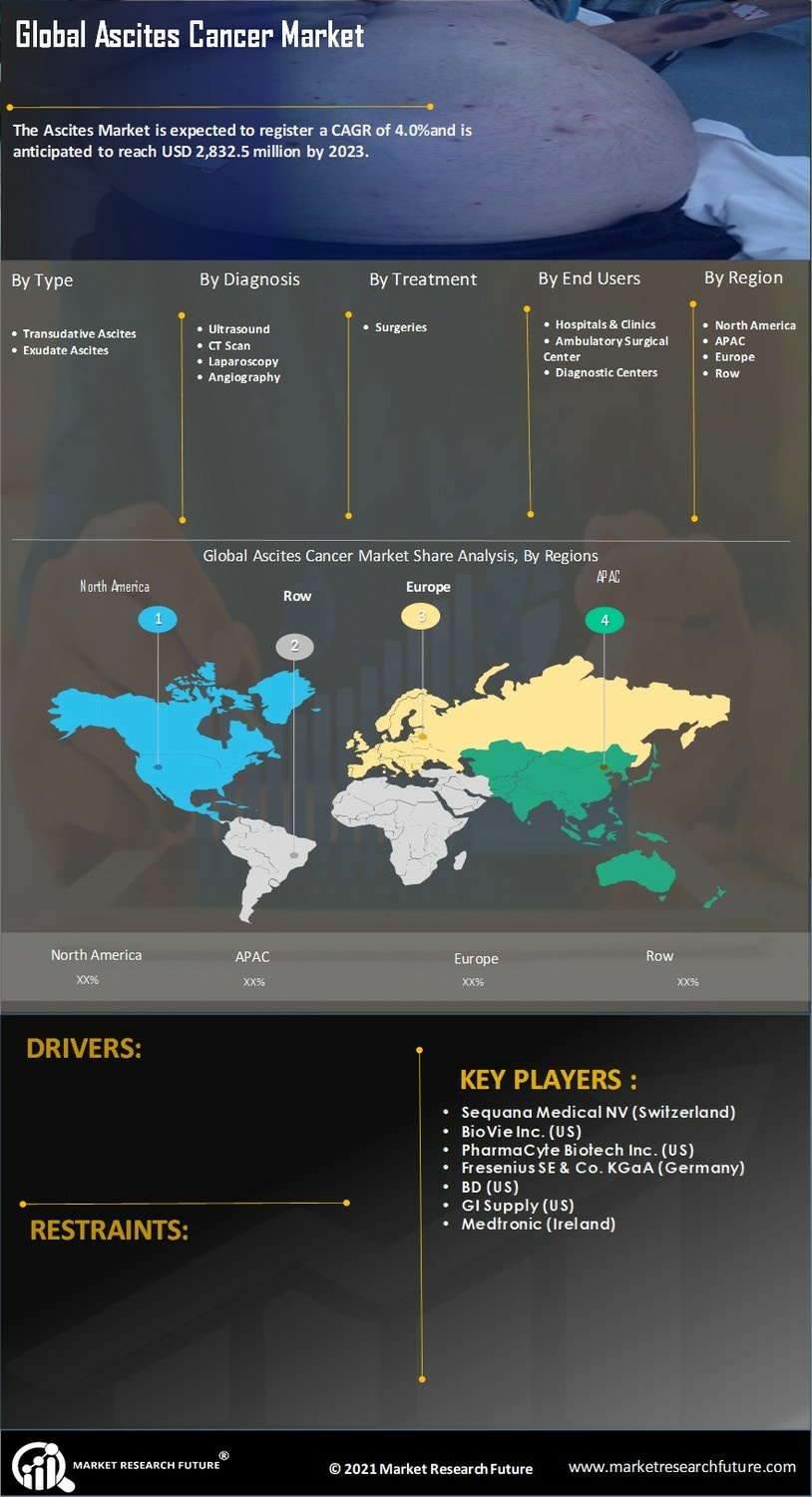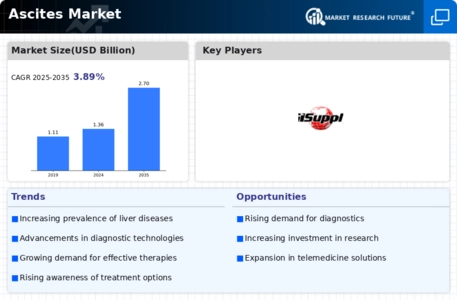Growing Awareness and Education
The Ascites Market is benefiting from increased awareness and education regarding liver health and ascites management. Public health campaigns and educational initiatives aimed at both healthcare professionals and patients are crucial in promoting understanding of the condition. This heightened awareness is likely to lead to earlier diagnosis and treatment, ultimately improving patient outcomes. Moreover, as more individuals become informed about the risks associated with liver diseases and the potential for developing ascites, there may be a corresponding increase in healthcare consultations. This trend suggests that the Ascites Market could see a rise in demand for therapeutic options and management strategies as patients seek to address their health concerns proactively.
Increasing Prevalence of Ascites
The Ascites Market is experiencing growth due to the rising prevalence of ascites, primarily associated with liver cirrhosis, heart failure, and malignancies. According to recent data, liver cirrhosis accounts for a substantial proportion of ascites cases, with estimates suggesting that approximately 50% of patients with cirrhosis develop this condition. This increasing incidence is likely to drive demand for effective treatment options and management strategies within the Ascites Market. Furthermore, as the population ages, the incidence of chronic diseases that lead to ascites is expected to rise, thereby creating a larger patient pool requiring medical intervention. This trend indicates a pressing need for healthcare providers to focus on innovative therapies and management protocols to address the growing burden of ascites.
Expansion of Healthcare Infrastructure
The Ascites Market is also influenced by the expansion of healthcare infrastructure, particularly in emerging economies. As healthcare systems develop and improve access to medical services, the diagnosis and treatment of ascites are likely to become more prevalent. Enhanced healthcare facilities and increased availability of specialized medical professionals can lead to better management of ascites, thereby driving market growth. Additionally, the establishment of liver disease clinics and specialized treatment centers may facilitate more comprehensive care for patients suffering from ascites. This trend indicates that as healthcare infrastructure continues to evolve, the Ascites Market will likely experience a corresponding increase in demand for effective treatment options and management strategies.
Rising Investment in Research and Development
The Ascites Market is poised for growth due to increased investment in research and development (R&D) focused on novel therapies and treatment modalities. Pharmaceutical companies and research institutions are actively exploring new drug formulations and treatment approaches to address the underlying causes of ascites. This investment is likely to yield innovative solutions that can improve patient outcomes and enhance the quality of life for those affected by ascites. Furthermore, as the understanding of the pathophysiology of ascites evolves, the development of targeted therapies may become more prevalent, potentially transforming the landscape of the Ascites Market. The commitment to R&D signifies a promising future for advancements in the management of this condition.
Technological Advancements in Diagnostic Tools
The Ascites Market is significantly influenced by advancements in diagnostic technologies. Innovations such as ultrasound, CT scans, and MRI have enhanced the ability to detect and assess ascites more accurately and efficiently. These technologies allow for earlier diagnosis and better monitoring of patients, which is crucial for effective treatment planning. The introduction of point-of-care testing and non-invasive diagnostic methods is also likely to improve patient outcomes and streamline the management of ascites. As healthcare systems increasingly adopt these advanced diagnostic tools, the Ascites Market is expected to expand, driven by the need for timely and precise interventions that can mitigate the complications associated with ascites.

















Leave a Comment